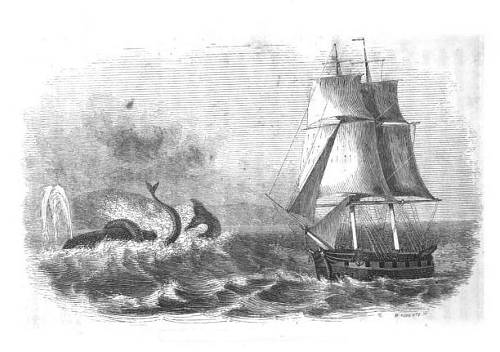
On the afternoon of June 21, 1818, the crew of the packet Delia, plying between Boston and Hallowell, Maine, came upon a struggle between a sea serpent and a large humpback whale, according to a statement sworn before a local justice of the peace. From Henry Cheever’s The Whale and His Captors (1850):
The serpent threw up his tail from twenty-five to thirty feet in a perpendicular direction, striking the whale by it with tremendous blows rapidly repeated, which were distinctly heard and very loud for two or three minutes. They then both disappeared, moving in a west southwest direction, but after a few minutes reappeared in shore of the packet, and about under the sun, the reflection of which was so strong as to prevent their seeing so distinctly as at first, when the serpent’s fearful blows with his tail were repeated and clearly heard as before. They again went down for a short time, and then came up to the surface under the packet’s larboard quarter, the whale appearing first and the serpent in pursuit, who was again seen to shoot up his tail as before, which he held out of water some time, waving it in the air before striking, and at the same time, while his tail remained in this position, he raised his head fifteen or twenty feet, as if taking a view of the surface of the sea. After being seen in this position a few minutes, the serpent and whale again sunk and disappeared, and neither were seen after by any on board.
Sea serpents, it seems, tend to win these contests — the English barque Pauline witnessed a similar drubbing half a century later.
